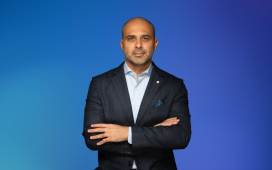Reform requires more focus placed on the creative end product and braver brand integration, writes Hug’s Tim Baker

The phone alarm goes off at 5am. My day starts with the intermittent 10 minute ‘snooze’ breaks until 5.30am. These characteristic ‘digital interruptions’ puncture my ‘analogue dreams’ and kick off another day of multi-platform confusion. At 40, I’m caught in no man’s land. Young enough to have caught the dotcom boom; old enough to be worn down by Snapchat.
But the dots (not the dashes) prevail. I am nudged and jostled with bite-sized chunks of digital distraction all day long. From clients, to friends, to colleagues: vital information sometimes; entertaining information sometimes; crucial real-time information sometimes. If my digestion of this digital dose falls behind by an hour then I’ve lost the thread. I’ve missed the message and I’m out of the loop.
Now enter brands and advertising.
Our clients are also bouncing from channel to channel as well. Digital is hot but they’ve still not worked out the ‘what’? We need it. We want it all. We know it costs less and we want it to launch tomorrow.
Pause. Deep breath. Sip of coffee. Time to plan properly.
The fundamentals of communication have in no way changed. Deliver a compelling, entertaining, smart, witty or insightful story. Insert products and brands at the heart of that story in a way that justifies their existence and purpose. Hope consumers remember the ad, tell their friends and pick it up in store.
Today, however, the television channels are replaced with multi-digital platforms. Each platform needs to be treated with individual care, attention and expertise. We used to sit on the sofa and focus intently. Now the brand needs to understand the individual digital channel, the consumption mindset and somehow dive into these personal spaces to ‘earn’ face time with the consumer. It’s a different approach and one that most of the industry understands (from their own ‘expert’ personal habits on digital).
The challenge now rests with the planning cycle and the client interface. Luckily, the Middle East was never very good at ‘annual planning’ (where neat plans were laid out for the full year). In the old ‘ideal model’, once November/December planning was done, the communication experts focused on slick implementation for the following year. Easy. Some clients would even describe knowing the fate of the year by April. Q1 was about heavy spend. Get the sales in the bag by April. Cruise through Q2 and Q3. Then a last push to ‘top up’ sales in Q4, therefore ensuring next year’s budgets are secured.
That’s over. Quarterly planning in digital is now considered ‘long term’. Short term is today.
Digital heralds a wealth of experimental opportunity for brands – daily. With it comes a minefield of challenges for us all. We can still lay down the ‘skeleton’ annual plan (to secure some budgets). But now the digital agency needs to harness multiple departments with lightning reactions. We fondly reminisce when our biggest challenge was that creatives disliked account management. Today’s digital agency is operating a minimum of five departments with wildly different temperaments. Development teams like the finance teams. Creative like the video and animation guys; social ‘like’ each other and account management remain un-liked (without justification in my view).
The content, however, that fuels today’s ‘pulsing’ digital and social channels is still often left as an after-thought. Every post can be a campaign. Every piece of copy can still inspire. Every video needs an idea and a budget. We are still striving for campaigns (spanning multi-channel with a multitude of tailored messages). But the pace of digital demand, coupled with the pressure to push live, is in some way squeezing the quality of the final end product for all brands.
We need some digital reform.
In the new ad-world order, where we learn that cats are scared of cucumbers and the most viral ad for 2015 was Droga5’s animals that are friends (source: Adweek 11/15, Android, Furever Friends), we need to take a little step back, to reassess the workflow. The fundamentals of communication remain the same but the pace of pushing content through the digital ‘pipes’ has gone supersonic and is affecting the efficacy of most brands’ communication.
Reform requires more focus placed on the creative end product and braver brand integration. While the pipes have shifted from paper to data, the consumer content needs are more selective than ever. What we watch and consume is now very personal and wholly interest led. We watch alone and then comment and share from afar. It’s a lonely world but let’s deliver the entertainment factor currently on demand.
Reform should try to feed the social snacking’ with something of nutritional value. When they need information, let’s feed them that. When they need a smile, let’s try and entertain them. When the world is in crisis, let’s help where we can. The increasingly tough part for brands will be knowing when and where to stick the logo.
Reform means more experimentation. It means a continued search for the answers for our clients. We’ll try to keep pace with the medium and our consumers. Let’s just try to all stay calm and give digital campaigns the time, thinking and attention required.
That’s two hours off the digital grid.
- WhatsApp (32 chat messages)
- Email (23 unopened)
- Missed Calls (3)
- SMS’s (4)
- Facebook notifications (3)
- Twitter notifications (5)
- Snapchat (Confused!!!)
(no)Time for Reform
Tim Baker is the CEO and co-founder of Hug Digital









